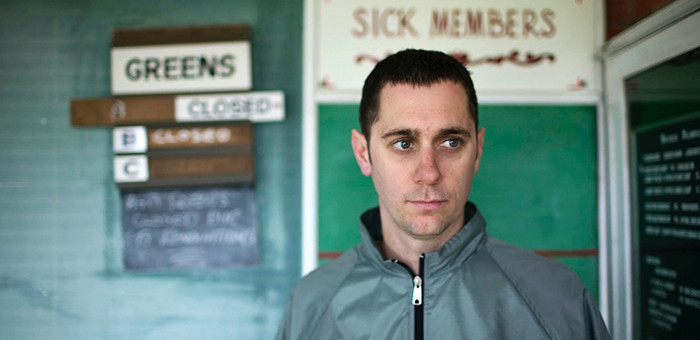
Andrew Spraggon from Sola Rosa, mid-2000s. - Publicity photo
During the early 1990s, a generation of hardware and laptop-based music makers from the UK and the US began crafting a form of electronic music that made an equal degree of sense on dancefloors and in living rooms. Broadly speaking, it was a mercurial blend of acid house, atmospheric techno, electro, and ambient, often underpinned by an open-eared approach to sampling. Sometimes it combined programmed beats and loops with live instrumentation; other times, it was all machine music.
By the late 90s, albums from overseas artists associated with these concepts – among them Aphex Twin, Boards of Canada, Autechre and Squarepusher – were prominently displayed in Wellington’s inner-city record stores. You’d find them filed away under genre tags like IDM (intelligent dance music), electronica, or perhaps even braindance. You could also hear some of this music by listening to specialist shows on the local student radio station, Radio Active, or hanging out in the chill-out zones at all-ages warehouse raves.
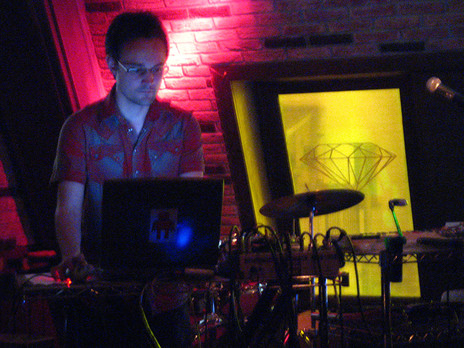
Jet Jaguar live at Ruby Room, Tokyo, August 2006 - Amanda Hinkley
Unsurprisingly, a small but dedicated number of electronic music producers from around New Zealand caught the bug. Soon enough, they started making music that played with the styles and conventions drawn from these musical ideas and embraced a futuristic and often faceless visual aesthetic. With local vinyl production having slowed to a crawl, this generation embraced the then-still-rising CD format. Working to the dazzling possibilities afforded by the medium, they recorded long, elaborate and immersive albums. As shown by this list of 10 New Zealand IDM and electronica albums from the late 1990s and early 2000s, more often than not the work has aged very well.
Before the decade was out, many of the key UK and US artists associated with the idea of intelligent dance music were already kicking back against being classified under the term. I’d surmise that most of the New Zealand musicians who have made comparable work probably feel similar. Creativity is a restless thing. Where you start isn’t always where you end.
--
Aspen – Album (1998)
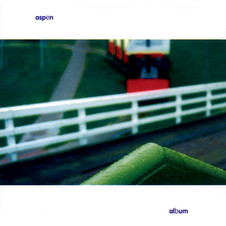
Aspen – Album (1998)
Wellington musician, producer and engineer Bevan Smith, better known under his Aspen, Signer and Introverted Dancefloor aliases, is one of the most quietly influential figures within New Zealand’s modern electronica, indie-pop and experimental music circles.
As documented on the 1996 compilation album Skankatronics Pure Wellingtronika, some of his earliest recordings emerged as part of the acid-techno group Oblique. Two years later, he released his first Aspen album – aptly titled Album – on CD, through Elephant Records’ Elephant Electronic sub-label. Inspired by the abstract machine music promoted by UK labels Warp Records, Mo Wax, and Rephlex, Smith artfully crafted a suite of sleek, atmospheric and sampledelic electronic instrumentals that still sound captivating 27 years on. One of the album’s highlights, ‘wedding song (again)’, pairs a shuffling drum machine groove with gorgeously glistening melodic tones.
In 1999, Smith established Involve, a boutique label focused on what he described as “Explorations in pop, indie, electronica and places in-between.” Over the next decade, he released several more Aspen and Signer albums. He also used Involve to give a release platform to fellow electronica producers Jet Jaguar and Mandrake and a range of drone, indie-folk and alt-rock acts, including All The Pretty Things, Marineville, Skallander, Over The Atlantic, T.C. Wedde, and Thought Creature, many of whom Smith has either played with or helped record.
In the early to mid-2000s, Smith achieved a level of recognition throughout the North American and European underground through two crucial Signer albums, Low Light Dreams (2002) and The New Face Of Smiling (2004), both released by US label Carpark Records. Over the course of the 2000s and 2010s, he became increasingly involved with more band-oriented music by playing with Over The Atlantic, Skallander, and The Ruby Suns, as well as co-producing for Glass Vaults and Womb.
Liquid Water – 30315 (1998)
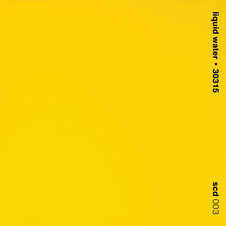
Liquid Water – 30315 (1998)
An underrated obscurity from Auckland’s late 1990s scene, 30315 was the sole album from Ben Harris, aka System/Nebulus and Denver McCarthy, aka Micronism/Mechanism’s duo project, Liquid Water. Released through Harris’ criminally under-discussed compact disc label, SYSTEMatic Recordings, 30315 is a trip through Liquid Water’s hypnotic and immersive take on experiential atmospheric electronics. Made up of the five-act ‘Quadrant’ sequence and several bonus live recordings from 1995, the album pairs drawn-out drones with ruptured synth pulses, sound art experiments and traces of asymmetrical rhythms.
That same year, McCarthy also released his ambient dub techno masterpiece Inside A Quiet Mind under his Micronism alias, before beginning the process of stepping away from electronic music for a spell to immerse himself in the Hare Krishna lifestyle. Harris continued running SYSTEMatic Recordings until 2002, overseeing the release of six other albums and compilations along the way. In 2015, he revived his System project with a new album of ambient IDM titled Konets.
Wai – Wai 100% (2000)
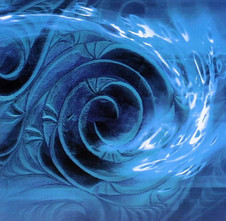
Wai - Wai 100% (2000)
In 1999, Maaka MacGregor and Mina Ripia created the Māori electronica group Wai to pay homage to Ripia’s then-recently deceased pāpā. The following year, they released their remarkable debut album, Wai 100%, through Jayrem Records. Across the album’s 13 tracks, MacGregor and Ripia crafted a remarkable fusion of te reo Māori waiata, poi rhythms and sampled sounds and textures. Opening with a mixture of shuffling grooves, bleepy textures, and beatific voice, Wai 100% quickly unfolds into a dazzling display of abstract electronica delivered from a te ao Māori point of view.
In the wake of the release of Wai 100%, MacGregor and Ripia won Best Mana Maori Album and were finalists for Best Mana Reo Album at the 2001 New Zealand Music Awards. Outside of Aotearoa, the band found an audience throughout Europe, Asia and America, before making it to the finalist list for BBC Radio 3’s first Awards for World Music in 2002. In 2010, their second album Ora won acclaim from the BBC and The Times. Fifteen years on MacGregor and Ripia are still active in a variety of musical projects.
Patio – Parallel Play (2000)
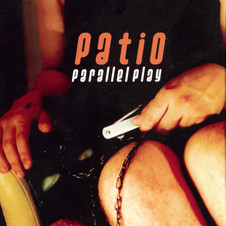
Patio – Parallel Play (2000)
Described by Igloo Magazine as “the perfect music to listen to on a cool summer day, or a pleasant summer/fall evening,” Parallel Play was the first and only album from Patio, the duo project of Wellington producers Bevan Smith, aka Aspen/Signer and Michael Upton, aka Jet Jaguar.
Released on compact disc through Smith’s Involve label, Parallel Play’s 12 tracks were a masterclass in blending found sounds and ambient textures with bassy, post-electro production techniques. By working together, Smith and Upton were able to rethink their perspectives, unlocking new levels of lush texture and dusty grit within their soundworlds. In their press material, Involve described Parallel Play as “Geeks on heat with beats, handcrafting meets power-tools, joined at the jog control, Involve devours itself and spits out the result.”
Rotor + – Aileron (2000)
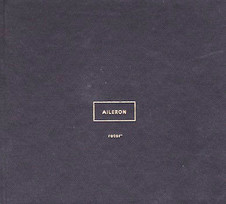
Rotor + – Aileron (2000)
In the late 1990s, the Dunedin electronica artist Leyton Glen wowed listeners around New Zealand with 1998’s Waterland, the vivid trance-techno album he released as Epsilon Blue through Kog Transmissions. By the time the new millennium was dawning, he was producing classic dub techno tracks for the Nurture label as Son.sine. At the same time, Glen was digging into the possibilities of field recordings, sample manipulation and sound as a sculpted sonic landscape with his Rotor + project.
Released through Kog Transmission’s experimental sub-label RTCNZ (The Radiophonics Trading Company of New Zealand), Aileron was quickly picked up for the US market by American Dave Tomaselli’s New York-based Statra Recordings. Made up of three long-form movements, the album is a beguiling journey through sound. Having previously released mix CDs and music from the Auckland punk musician turned NYC tastemaker Harry The Bastard and Denver McCarthy, Statra deserves some real credit for championing abstract sounds from the Antipodes in the heat of an exciting moment.
Over the next 12 years, Glen released two more Rotor + albums, Map Key Window (2004) and Dust (2013), eventually revealing that all three projects formed a conceptual trilogy. In 2016, his Dunedin Fringe Festival production unreliable witness won the festival’s “best of Fringe”, “most original concept”, and “best music” awards.
Bluey – Ocean Unknown (2000)
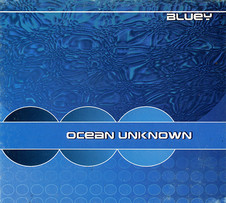
Bluey - Ocean Unknown (2000)
Originally released on CD through the small South Island label Golden Bay Records, Ocean Unknown by Bluey is one of those records that really creeps up on you. One third of Matipo Pyramid, the trance production outfit he shared with Max Maxwell and Colin Chapman, Greg Powell aka Bluey got his in start in music as a guitarist and drummer in the mid 1980s, before discovering electronic music while travelling through Thailand, India and England during the early 1990s. Soon enough, he was involved in organising the early Entrain outdoor parties in the Nelson region. In the process, Powell helped lay the foundation for the seminal South Island summer rave, The Gathering.
In 1996, Powell, Maxwell and Chapman released their first and only album as Matipo Pyramid, Aotearoa. A year later, the group disbanded as its members dispersed to different parts of the globe. In the wake of Matipo Pyramid, Powell continued to develop his skills as an electronic music producer, culminating in the release of Ocean Unknown. Over the course of 12 lush, watery tracks designed to evoke the feeling of being a newborn child, he combined sensibilities cribbed from dub and ambient music with the affectations of techno, breaks, big beat and trance. As he put it at the time, “The sound cannot be accurately defined by any well-known genre. The tracks contain the inherent originality which comes from using modern technology in such an isolated and stunning place as Golden Bay".
A decade later, the London-based label Dubmission Records released a digital reissue of Ocean Unknown. As a result, Bluey’s unique and special soundworld is now available via Bandcamp and streaming services. If you’re looking for a record to drift and dream to, it might very well be the one.
Mandrake – Shake Your Space Traveller (2001)
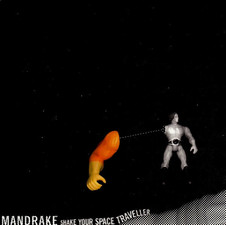
Mandrake – Shake Your Space Traveller (2001)
Shake Your Space Traveller is the sound of a teenage Herbie Hancock, Boney M and Moog Keyboard enthusiast mixing musical ideas drawn from jazz-funk, electro and sci-fi b-movies with the 8/16-bit chiptune sensibilities of 90s Nintendo videogame consoles. Released by Involve and almost impossible to find online, it’s the first formal release from Jeremy Coubrough aka Mandrake, a New Zealand electronic music producer, jazz saxophonist, musician and composer who came of age in Wellington during the late ‘90s and early 2000s.
After moving on from Mandrake, Coubrough found his footing as the original drummer in the Te Whanganui-a-Tara ancient future funk band Orchestra of Spheres, before moving overseas to Melbourne, and later Berlin. In 2011, he launched his groundbreaking abstract electronica project, Tlaotlon.
Over the following years, Coubrough released a series of celebrated singles, EPs and albums that won him rave reviews from crucial US and UK music media outlets of the era, such as Tiny Mix Tapes, The Wire, and The Quietus. These days, Coubrough can be found opining on “the smooth jazz conspiracy“, working as a 3D digital artist, and performing at avant-garde music events across Europe and at home on the odd visit back to Aotearoa.
Sola Rosa – Solarized (2001)
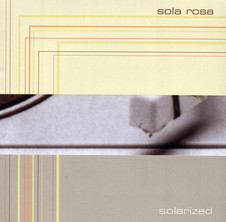
Sola Rosa – Solarized (2001)
During the 90s, Andrew Spraggon spent six-years as the lead guitarist and vocalist of the Auckland alt/post-rock group Cicada, before falling in love with the emergent sounds of electronica, dance music, hip hop, and reggae. As he told Auckland writer Gareth Shute for AudioCulture in 2021, “I was largely influenced by labels such as Ninja Tune and Mo Wax as well as artists like David Holmes, DJ Shadow and Howie B in particular. Also, a series of releases called Dope On Plastic.”
As the final decade of the 20th century drew to a close, Spraggon began using samplers, keyboards and basic computer software to produce his own electronic music as Sola Rosa, before releasing two now-rare downbeat EPs, Starter for 4 (1999) and Entrance To Skyway (2000). By 2001, he was ready to unveil his debut album, Solarized, through Festival Mushroom Records.
Across the album’s nine tracks, Spraggon and his collaborators achieved a vibrant fusion of live instrumentation and sample-based production that drew from shuffling Latin rhythms and lush mid-20th-century lounge music. The results had the energy to move a dancefloor, but they also evoked the perfect moody atmosphere for winding down at home after a big night out. Fittingly, Solarized was awarded Best Electronic Album at the NZ Music Awards in 2002.
Twenty-four years on, Sola Rosa has taken Spraggon around the world several times. Along the way, he’s released seven albums of original material, collaborated with vocalists like Deva Mahal, Spikey Tee, Iva Lamkum, Noah Slee, Jordan Rakei, Oliver Daysoul, Georgia Anne Muldrow and Kevin Mark Trail, while finding audiences throughout the US, UK, Europe, Australia and New Zealand.
Phelps & Munro – Slowpoke (2003)

Phelps & Munro – Slowpoke (2003)
Released through Jim Pinckney’s Round Trip Mars label, Slowpoke by Kerikeri-born producer Gerald Phillips, aka Phelps & Munro, is a perfect synthesis of Akai MPC 2000 sampler-based electronic production and vivid experimental rock textures. As the Lyttelton-based writer Kiran Dass observed in a 2003 piece for NZ Musician, “Slowpoke seems to come out of nowhere to seduce both guitar fans and electronica boffins alike … it boasts a nice balance between the warmth of noisy guitars and the aloof coolness of electronic music.” These qualities come together perfectly on album cuts like ‘Slap Me Stu’ and ‘Horse Winning Without Rider’.
Before Slowpoke, Phelps & Munro were partially sold to audiences through the classic art-prank of fake identity. As the project’s original biography read: Roy Phelps and Jackson Munro met while both attending art school in 1992,” runs the script. “From that point on, they have become not only formidable musical colleagues but also inseparable friends. Like classic acts Simon & Garfunkel and Kruder & Dorfmeister, they too decided to use their respective surnames, bridged by an ampersand, as their moniker.” However, what really kept the fire burning with fans was the music.
Twenty-two years on, Slowpoke remains the sole release from Phelps & Munro. That said, in 2013, he re-emerged for a one-off live performance at St Jerome’s Laneway Festival in Auckland. Read Gary Steel’s AudioCulture profile of Phelps & Munro here.
Jet Jaguar – Is Love (2003)
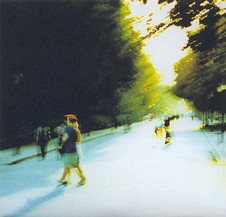
Jet Jaguar - Is Love (1998)
In his 2007 book Soundtrack: 118 Great New Zealand Albums, Nelson music journalist Grant Smithies lavished Is Love – by Wellington producer Michael Upton aka Jet Jaguar – with high praise. In his words, “It’s so special you can set your CD player to repeat until your mind begins to float free.” Released through Bevan Smith’s Involve label, the music on Is Love was actually written before he released his second album, Think About It Later, through Capital Recordings. However, due to the quirks of the recording industry of the era, Think About It Later came out first.
Throughout the 10 pieces of perfectly poised laptop electronics that make up Is Love, Upton plays with texture, tempo, groove and melody in beautiful and sometimes obtuse ways. It’s a set of songs that had enough of a rhythmic emphasis to move dancefloors during the era it was released in, while also functioning as an immersive headphone experience, or to echo Smithies’ assessment and evoke Brian Eno’s original definition of ambient music, a means to create space for thought. You can hear these qualities on tracks like ‘I’ve Got A Fist Of Pure Emotion’, which sneaks up on the listener beautifully.
To date, Upton has released 11 albums, a multitude of EPs, and contributed to many groups and side-projects, including Datsun Stereo, Dub Connection, Malty Media, MonkeyShuttle, Montano, Patio, Takamu, and Tonkyn Pearson.
--